Molding is normally a blessing. It can accentuate rooms of any size and provide depth and elegance. Our house however, has too much molding. It has so many angles that M.C. Escher would’ve called it confusing. We have molding around the molding that’s goes around our windows. There is even molding around the light switches. Our project today is to remove the molding that goes past the window area.
For this project I purchased a Ryobi 18 volt Job Plus with Multi-Tool Attachment. Normally I wouldn’t purchase a new tool just to do one job. However, there is enough molding in the house and previous times that I needed something that can do a punch-cut that it warranted buying the tool.
Punch cut sounds like a very cool thing. It can dig into surfaces without the clumsiness of a jigsaw and with more precision than drilling a hold and then sawing it out. For the record, we’ve tried both of those methods and they worked horribly.
Before cutting off the excess molding I knew that I wanted it to be capped with the square piece. I drew a straight line across the molding, parallel to the top of the window where the molding would be placed.
Using the multi-tool was really simple, but did require a window or two in order to get it down. Initially I was punching through the wood and then going left to right, the way that you would with a traditional saw. Once I figured out that it would be much quicker to simply horizontally punch cut across the line that I drew it didn’t take long at all.
When you get towards the end of the board the saw starts to feel different. If you saw slowly you’ll feel the resistance decrease to almost nothing. It’s at this point that you’re through the molding and on the drywall. On a couple instances I had to use the flat blade of my hand held multi use tool to pry it off the wall a little bit. Out of five windows and 14 cases where I had to remove molding I didn’t dig into the drywall once.
After the molding was removed I got the steamer and removed the wallpaper that was behind the molding. (Yes, in addition to too much molding there was wall paper everywhere in the house-even on the light switch cover!)
Once that process was done I got a rag with hot water and soap and scrubbed the area where the wallpaper was. This removes all of the excess glue and needs to be done whenever you remove wallpaper. If you don’t, then the area will look rough and haggard, even after you paint it.
Because there were nail holes that were higher than where the old molding is being relocated to we had to skim that area with spackling paste.
Once that was dry we lightly sanded it using the sanding attachment on the Ryobi Multi-Tool.
When the sanding was done we vacuumed the area. Because the area had been wallpapered we primed it. After the primer was dry it was OK to apply the final coat of the main wall color.
After the final color was dry we put the old molding in its new location.
This was a very simple Naptime DIY. In this particular case it took more time because it was in our bedroom which has lots of furniture. However if you’re removing molding in a room with very little in it the task will take five minutes.

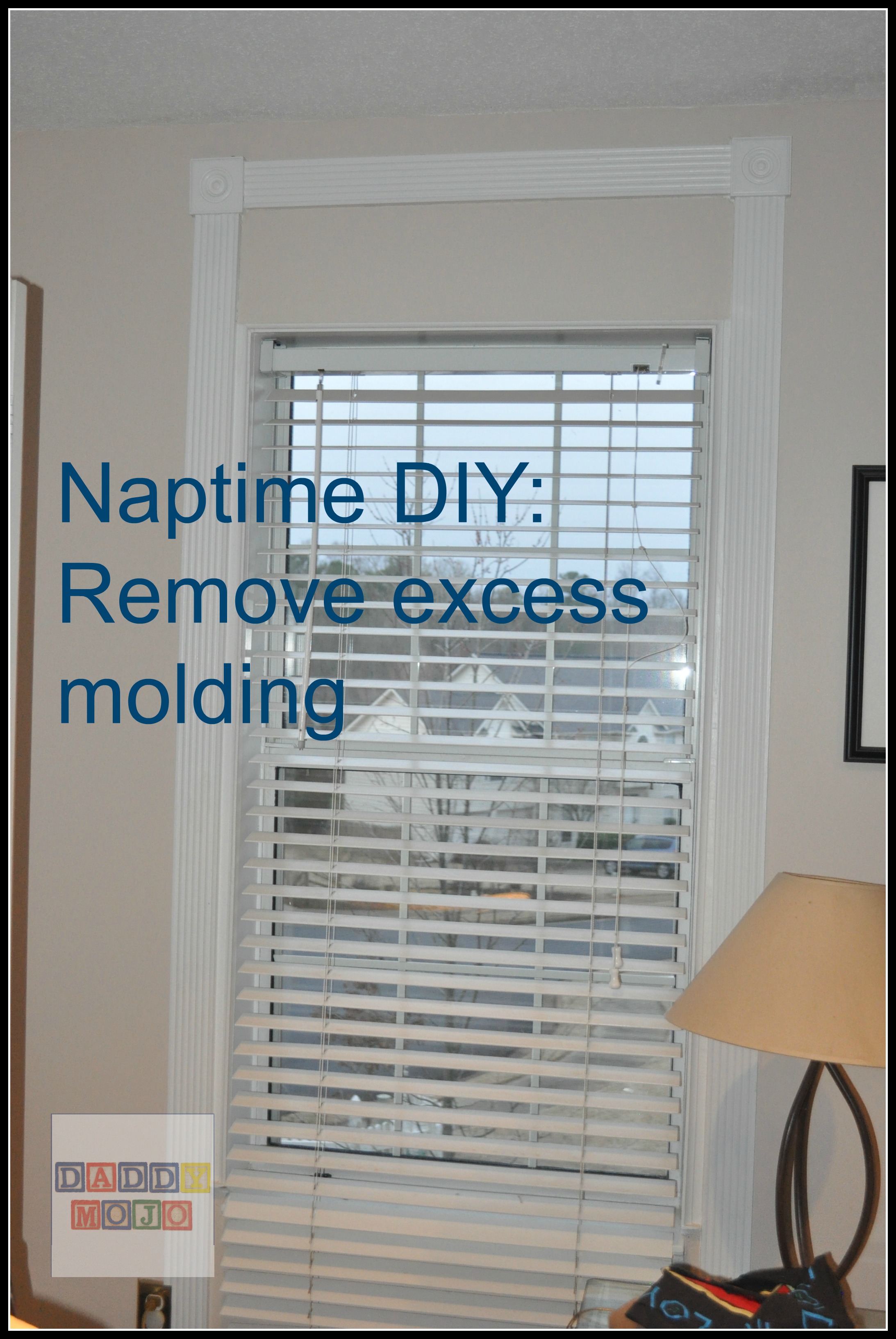
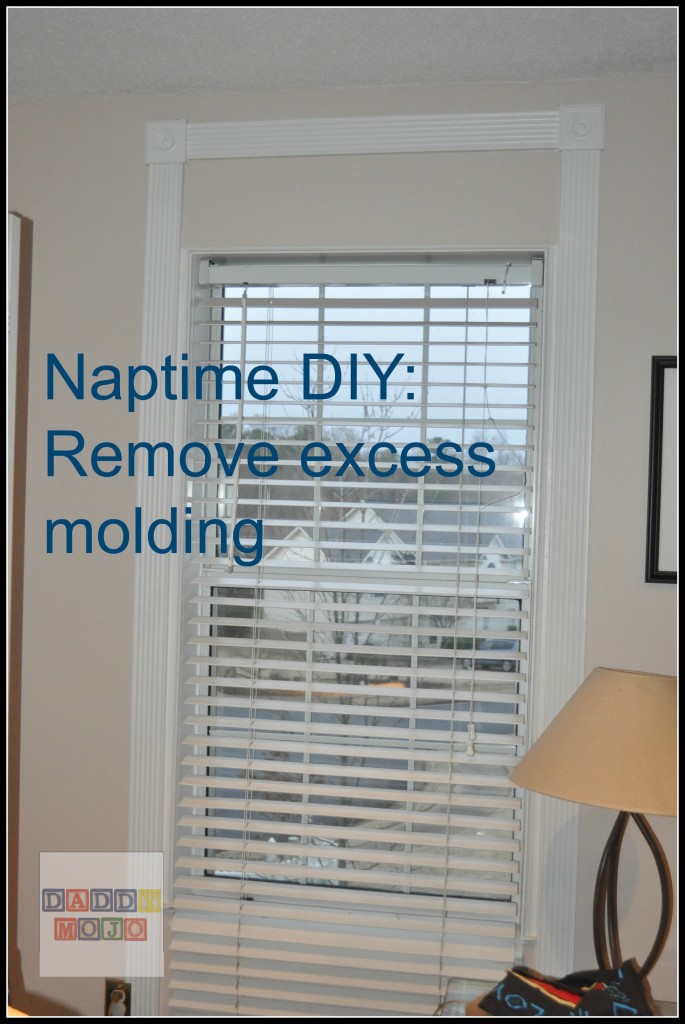
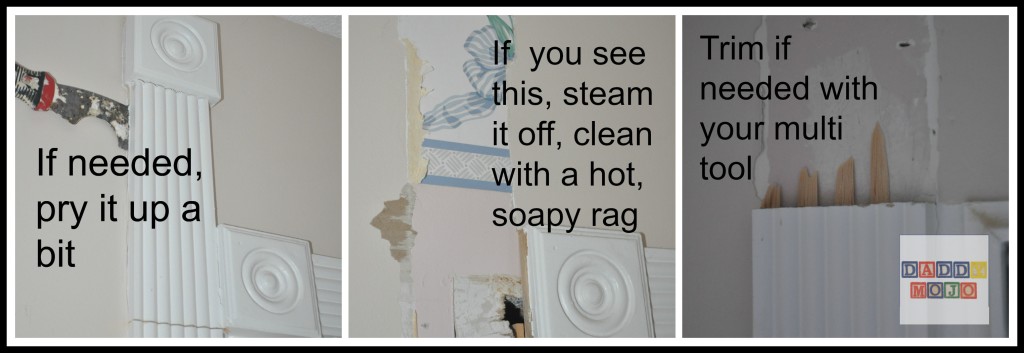
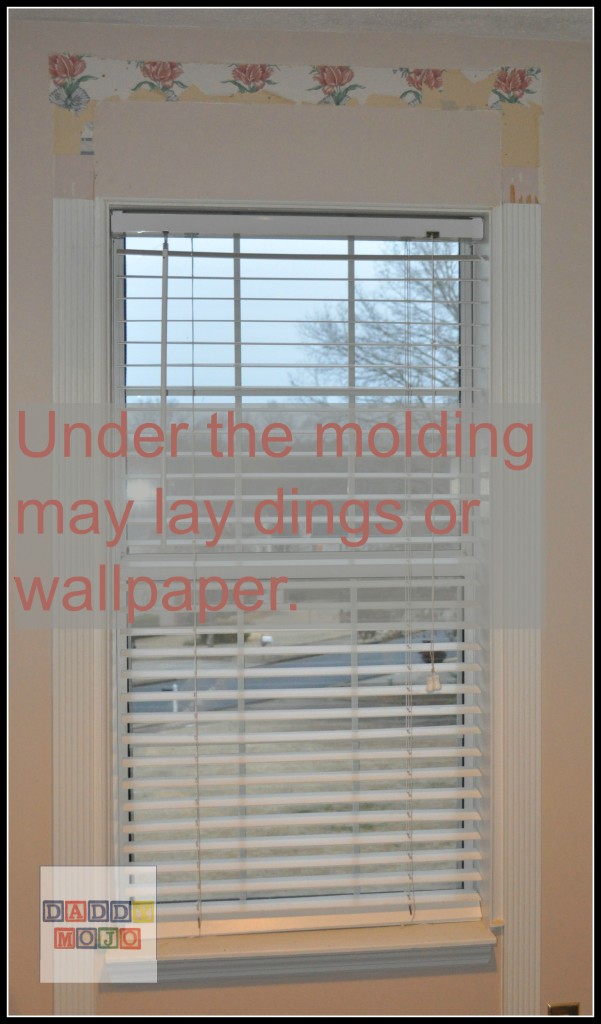
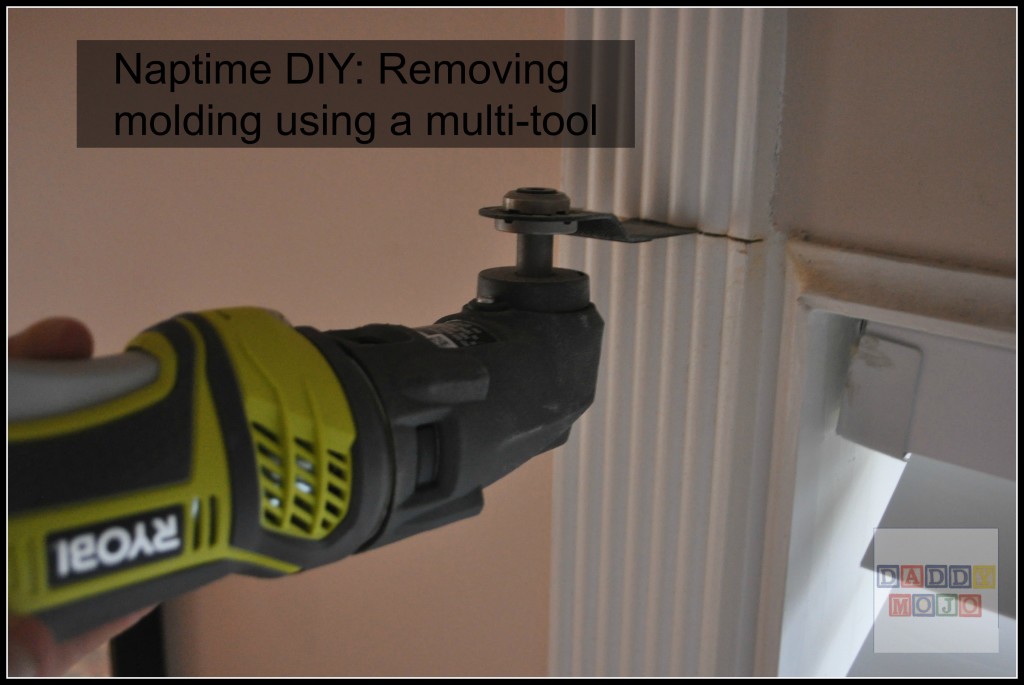




 Facebook
Facebook Twitter
Twitter Flickr
Flickr GooglePlus
GooglePlus Youtube
Youtube